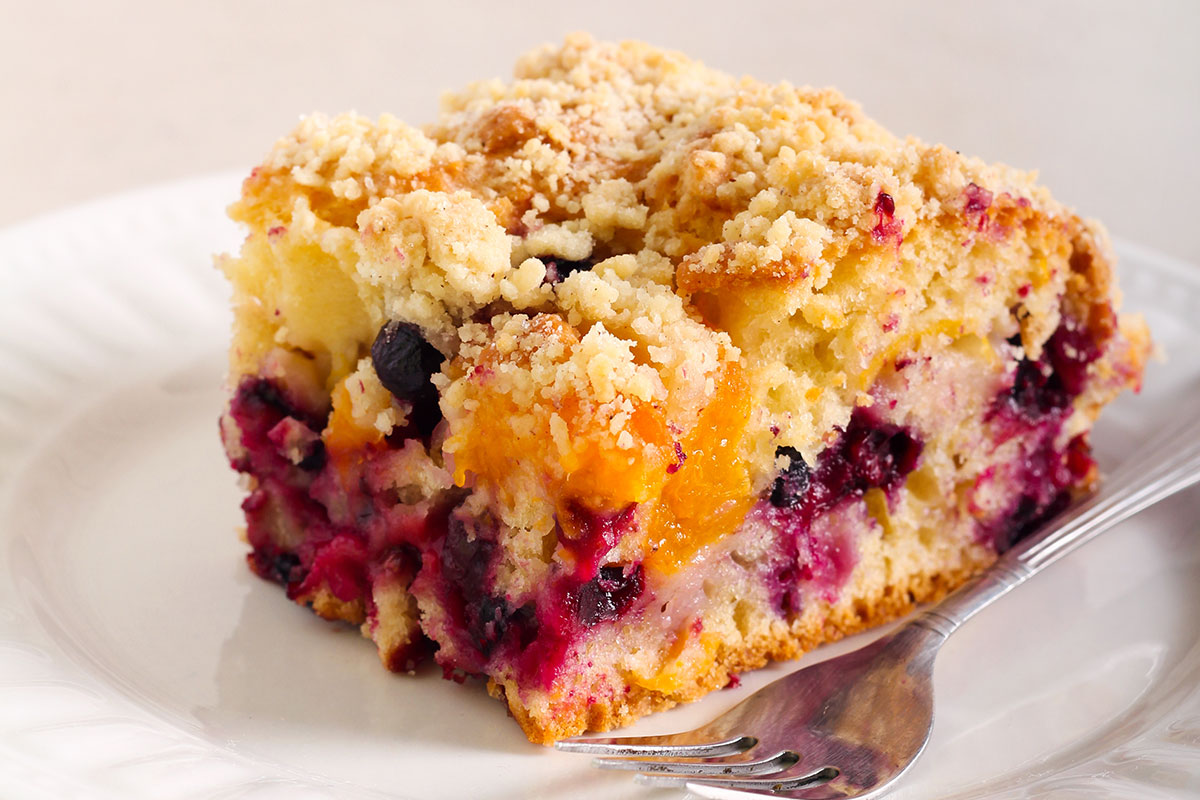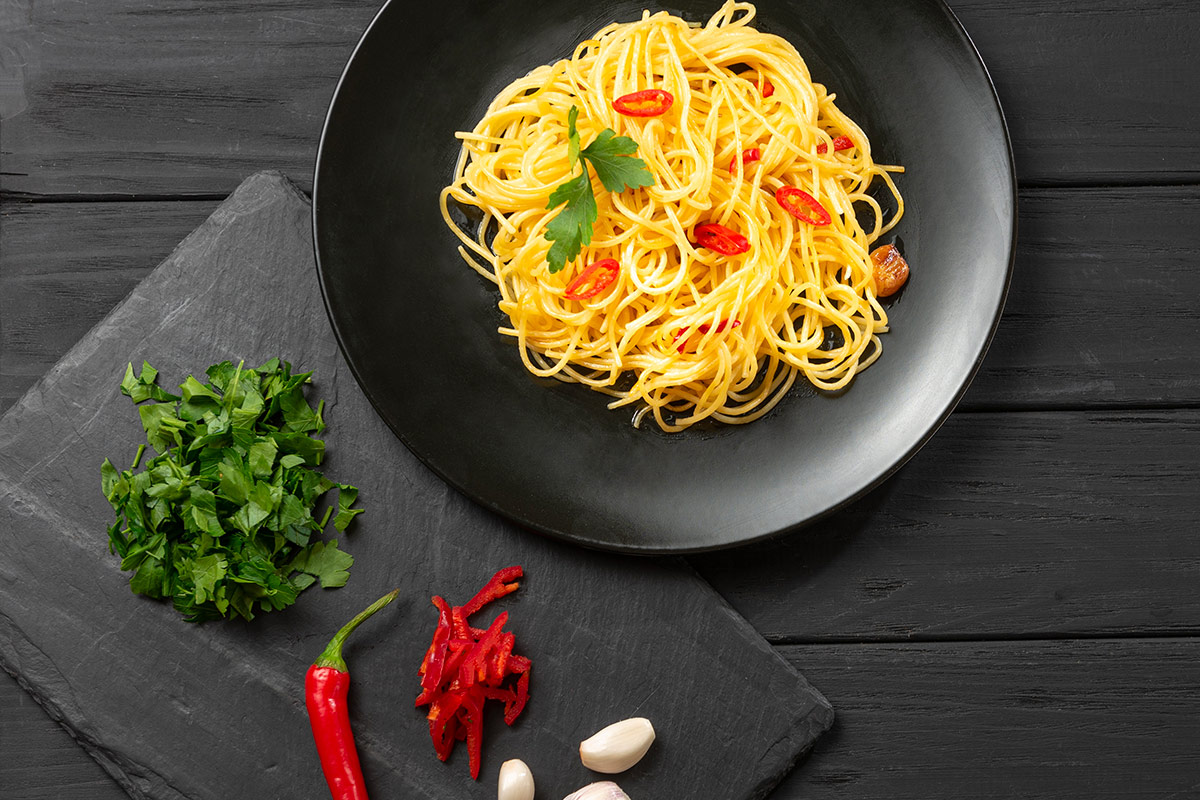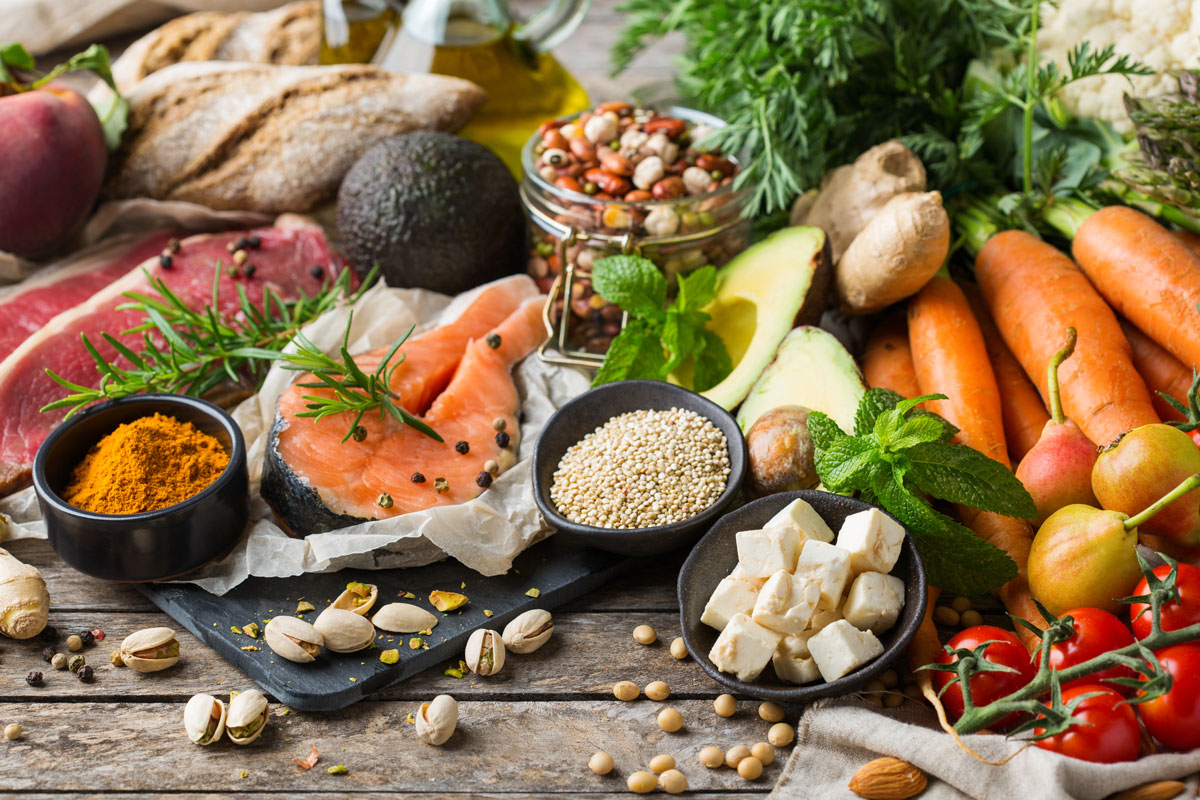Stone Fruit and Berry Buckle Recipe, Spotlight on Blueberries, Flavanols and Memory, Freezing Summer’s Bounty and Walking for Your Brain
With farmers’ markets brimming with all kinds of berries and ripe stone fruit like peaches, plums, and nectarines, there’s no better time to bake a buckle—a one-layer cake named for the dimpled look as the cake rises over chunks of fruit and a tempting crumble topping. This issue of the newsletter also has a boost-your-memory theme, with two important studies—one looks at the cognitive risks of flavanol deficiency and the other, at how walking boosts brain connectivity and thereby memory.
Stone Fruit and Berry Buckle
 Stone Fruit and Berry Buckle
Stone Fruit and Berry BuckleThis recipe is sized to feed a crowd—any leftovers make a terrific breakfast the next day. Choose fruit based on availability—it’s as delicious with just one variety as it is with four or more! Right out of the oven, the buckle is exceptional when topped with olive oil ice cream, a simple frozen treat you can make at home.
Ingredients
For the crumble topping:
- 4 ounces unsalted butter, cubed and chilled
- 1 cup sugar
- 2/3 cup all-purpose flour
- 1/2 teaspoon ground cinnamon
For the cake:
- 1/2 cup extra virgin olive oil, plus more for the baking dish
- 8 ounces unsalted butter at room temperature
- 2 cups sugar
- 8 large eggs
- 3 cups all-purpose flour
- 1 teaspoon fine salt
- 1-1/2 teaspoons baking powder
- 6 cups assorted berries and stone fruit chunks (skin on)
- Optional toppings: fresh blueberries, confectioners’ sugar for dusting, lightly whipped cream, or ice cream
Directions
Step 1
Preheat your oven to 350°F. Lightly coat a 13-inch by 9-inch baking dish with olive oil; set aside.
Step 2
Make the topping: Use your hands or a pastry blender to turn the butter, sugar, flour, and cinnamon into small bits, ranging from the size of peas to the size of beans. Set aside.
Step 3
Make the batter: In a large bowl, cream butter and sugar with an electric mixer until fluffy. With the machine running on low, slowly pour in the olive oil and then add the eggs, one at a time, beating after each addition until combined. In a separate bowl, whisk together flour, salt, and baking powder. With your mixer on a low speed, gradually add flour mixture to the wet batter until incorporated.
Step 4
Transfer the batter to the baking dish and use a large offset spatula to smooth the surface. Arrange the fruit in a fun pattern over the top and then sprinkle on the crumble, being careful to get it into the corners of the dish so that every bite includes it.
Step 5
Bake until the top of the cake is browns lightly and the tip of a sharp knife inserted in the center comes out clean, about an hour. Serve while still warm.
Yields 12 servings

Healthy Ingredient Spotlight
Bountiful Blueberries
Blueberries are more than delicious—they pack amazing health benefits. Here are four great reasons why, according to Cleveland Clinic dietitian Julia Zumpano, RD, LD.
Blueberries pack an antioxidant wallop. Along with having vitamins C and K and the mineral manganese, they’re rich in anthocyanins, which give the berries their blue-purple color and protect our cells from damaging molecules called free radicals. To get the most antioxidants, enjoy some blueberries raw, and always choose organic when available.
Blueberries’ soluble fiber helps manage blood cholesterol by sweeping cholesterol-laden bile out of the body, which, in turn, can lower the risk for heart disease.
Blueberries help decrease blood sugar levels, thanks to the combination of their fiber and a lower amount of natural sugar than other fruits, according to some studies.
Blueberries may also help with blood pressure, especially in people with metabolic syndrome. Eating them contributes to the body’s production of nitric oxide, which helps relax blood vessels.

Quick Kitchen Nugget
Freezing Fruits and Vegetables
Want to save some of summer’s bounty for the winter? Freeze pieces individually by spreading them in a single layer on a rimmed sheet pan. When frozen solid, transfer to airtight freezer-safe containers or bags, filling them up to minimize the amount of trapped air and avoid “snow” forming on the pieces.

For Your Best Health
Flavanols and Memory
A large-scale study led by researchers at Columbia and Brigham and Women’s Hospital/Harvard is the first to establish that a diet deficient in flavanols, a specific type of phytonutrient within the flavonoid group, is linked to age-related memory loss.
The study found that flavanol intake among older adults tracks with scores on tests designed to detect memory loss due to normal aging and that replenishing these bioactive dietary components in mildly flavanol-deficient adults over age 60 improves their performance on these tests.
“The improvement among study participants with low-flavanol diets was substantial and raises the possibility of using flavanol-rich diets or supplements to improve cognitive function in older adults,” says Adam Brickman, PhD, professor of neuropsychology at Columbia University Vagelos College of Physicians and Surgeons and coleader of the study. The finding also supports the emerging idea that the aging brain requires specific nutrients for optimal health, just as a baby’s brain requires specific nutrients for proper development.
The current study builds on over 15 years of research done in the lab of the study’s senior author, Scott Small, MD, the Boris and Rose Katz Professor of Neurology at Vagelos. That work linked The current study builds on over 15 years of research done in the lab of the study’s senior author, Scott Small, MD, the Boris and Rose Katz Professor of Neurology at Vagelos. That work linked age-related memory loss to changes in the dentate gyrus, a specific area in the brain’s hippocampus (a region vital for forming new memories), and showed that flavanols improved function in this part of the brain.
The Columbia team collaborated with researchers at Brigham and Women’s Hospital studying the effects of flavanols and multivitamins in COSMOS (COcoa Supplements and Multivitamin Outcomes Study). The current study, COSMOS-Web, was designed to test the impact of flavanols in a much larger group and explore the link between flavanol deficiency and cognitive aging in the hippocampus.
How the study was done
More than 3,500 healthy older adults were randomly assigned to receive a daily flavanol supplement or placebo for three years. The active supplement contained 500 mg of flavanols, including 80 mg of epicatechins, an amount that adults are advised to get from food.
At the beginning of the study, all participants completed a survey that assessed the quality of their diet, including foods known to be high in flavanols. Participants then performed a series of web-based activities in their own homes, designed and validated by Dr. Brickman, to assess the types of short-term memory governed by the hippocampus. The tests were repeated after one year, two years, and three years.
More than a third of the participants also supplied urine samples that allowed researchers to measure a biomarker for dietary flavanol, a test developed by the study’s coauthors at Reading University in the UK, before and during the study. The biomarker gave the researchers a more precise way to determine whether flavanol levels corresponded to performance on the cognitive tests and ensure that participants were sticking to their assigned regimen (compliance was high throughout the study). Flavanol levels varied moderately, though no participants were severely flavanol-deficient.
At the end of the first year of taking the flavanol supplement, participants who reported consuming a poorer diet and had lower baseline levels of flavanols saw their memory scores increase by an average of 10.5% compared to placebo and 16% compared to their memory at baseline. Annual cognitive testing showed that the improvement observed at one year was sustained for at least two more years.
The results strongly suggest that flavanol deficiency is a driver of age-related memory loss, the researchers say, because flavanol consumption correlated with higher memory scores and flavanol supplements improved memory in flavanol-deficient adults.
Next steps
“We cannot yet definitively conclude that low dietary intake of flavanols alone causes poor memory performance, because we did not conduct the opposite experiment: depleting flavanol in people who are not deficient,” Dr. Small says, adding that such an experiment might be considered unethical.
The next step needed to confirm flavanols’ effect on the brain, Dr. Small says, is a clinical trial to restore flavanol levels in adults with severe flavanol deficiency. “Age-related memory decline is thought to occur sooner or later in nearly everyone, though there is a great amount of variability,” he explains. “If some of this variance is partly due to differences in dietary consumption of flavanols, then we would see an even more dramatic improvement in memory in people who replenish dietary flavanols when they’re in their 40s and 50s.”
Flavanols are found in many healthful foods that you can add to your diet for a variety of health benefits: berries, peaches, grapes, onions, scallions, tomatoes, lettuce, broccoli, kale, and tea.

Fitness Flash
The Brain Benefits of Walking
Researchers have long known that moderate exercise has a beneficial impact on the body’s response to inflammation, but what’s been less understood is why. New research done on a mouse model at York University in Toronto, Canada, suggests that the answers may lie within the body’s macrophages, white blood cells responsible for killing off infections, healing injury, and otherwise acting as your internal first responders.
“Much like you train your muscles through exercise, we showed that exercise of moderate intensity ended up training the precursors of those macrophages in the bone marrow,” says Ali Abdul-Sater, PhD, associate professor in the University’s School of Kinesiology and Health Science and York Research Chair. “The way that exercise is doing this is by changing the way those cells breathe—essentially, how they use oxygen to generate energy and then changing the way they access their DNA.”
While many studies have looked at temporary boosts to the immune system immediately after exercise, this study, published in the American Journal of Physiology-Cell Physiology, found these changes occurred even a week later, suggesting that they are long term.
“Inflammation is amazing—it’s a very important part of our normal immune response,” says Dr. Abdul-Sater. Inflammation is the body’s response to infection and other stressors, and some level of inflammation is necessary and desirable. “What we’re concerned about is excessive inflammation,” he explains. “Heart disease, diabetes, many cancers, and autoimmune diseases all essentially begin because there was an inappropriate inflammatory response.”
The study found that, for active mice, it was around the six-to-eight-week mark into the exercise regimen when changes really became apparent. “There’s a lot of rewiring that’s taking place in the circuitry of how the cells breathe, how the cells metabolize glucose, how the cells then access DNA. So all that just takes time.”
Dr. Abdul-Sater says that because the inflammatory response is a very ancient one, this aspect of the immune system is generally very similar across mammals, and he expects the research will translate well to people. In the next phase, the team will collect immune cells from human volunteers who will do exercises of various intensities to see which workout routines are most beneficial to balance the inflammatory response.
“The thing with humans is there’s no intervention that will work on everyone. We know that, but what this study suggests is that moderate and persistent exercise not only improves metabolic health, but also will improve immune health in the long run.”
Get More Recipes In Your Inbox!



